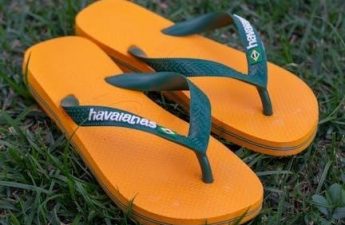Cell Membrane Bubble Lab⁚ An Overview
This engaging lab uses soap bubbles to model cell membranes. Students observe bubble properties – flexibility, self-repair, and selective permeability – drawing parallels to membrane functions. The activity reinforces understanding of the fluid mosaic model and membrane transport. It’s a hands-on approach to complex biological concepts, ideal for various learning levels.
Materials and Setup
To conduct a successful cell membrane bubble lab, gather these essential materials⁚ a shallow dish or tray, distilled water, glycerin (optional, for increased bubble durability), liquid dish soap (low-sudsing varieties work best), various small objects of differing sizes and properties (e.g., small beads, sprinkles, pieces of string, tiny pieces of paper, etc.), pipettes or droppers for precise liquid dispensing, measuring cups or spoons for accurate ingredient measurement, and protective eyewear. Thorough preparation is key to a smooth experiment.
Begin by carefully preparing the bubble solution. Combine the distilled water, glycerin (if using), and dish soap in the specified ratios – experiment with different ratios for optimal bubble formation. Gently mix the solution without creating excessive bubbles. Avoid vigorous shaking or stirring. Then, pour a small amount of the bubble solution into the shallow dish, ensuring a thin, even layer covers the bottom. This creates the surface for your bubble experiments. Finally, gather your small objects, ensuring they are clean and dry to prevent contamination of the bubble solution.
Procedure and Observations
Once your bubble solution is prepared and the shallow dish is ready, carefully begin the experiment. Using a straw or pipette, gently blow a bubble onto the surface of the solution. Observe its shape and size. Next, using a clean, dry finger or a small, clean object, carefully try to touch or pierce the bubble. Record your observations regarding its reaction – does it burst easily? Does it deform and then quickly recover its original shape? Repeat this process with multiple bubbles. Now, introduce the various small objects you prepared. Carefully place each object onto the bubble’s surface and observe its interaction. Does the object pass through the bubble? Does it cause the bubble to burst? Does it stick to the surface? Meticulously document all your observations for each object.
Pay close attention to the bubble’s behavior and the reaction of the bubble to different types of objects. Try to gently push some of the smaller objects into the bubble and observe the effect. Note any changes in the bubble’s shape or size. After the main experiment, consider introducing a small amount of water or another liquid to the bubble surface and observe the bubble’s reaction. Remember to record your observations thoroughly and precisely. These recorded observations form the basis of your analysis and conclusions.
Similarities Between Bubbles and Cell Membranes
The striking resemblance between soap bubbles and cell membranes lies in their fundamental structure and behavior. Both consist of a double layer of molecules – phospholipids in cell membranes and surfactant molecules in bubbles – arranged with hydrophilic (water-loving) heads facing outwards and hydrophobic (water-repelling) tails oriented inwards. This bilayer structure is crucial for both, creating a selectively permeable barrier. Like cell membranes, bubbles exhibit fluidity and flexibility; they can bend, stretch, and even self-repair minor punctures. The ability of a bubble to maintain its structure, despite minor disruptions, mirrors the resilience of a cell membrane in maintaining its integrity under various conditions. This remarkable similarity makes bubbles an excellent analog for demonstrating membrane behavior in a simple and engaging manner.
Furthermore, both bubbles and cell membranes exhibit selective permeability. Only certain substances can pass through the bubble’s film, similar to how cell membranes regulate the passage of molecules into and out of the cell. The analogy breaks down in certain aspects, as bubbles lack the complex protein structures embedded in cell membranes, which are vital for specific transport processes. However, the fundamental structural and functional similarities make the bubble a powerful teaching tool for visualizing membrane properties;
Fluid Mosaic Model Analogy
The soap bubble serves as a compelling visual analogy for the fluid mosaic model of the cell membrane. The model describes the membrane as a dynamic structure composed of a phospholipid bilayer interspersed with various proteins and other molecules. The bubble’s fluidity is readily observable; it can be stretched and deformed without breaking, mirroring the flexibility of the cell membrane. The “mosaic” aspect is represented by the possibility of incorporating various substances into the bubble solution, altering its properties. For instance, adding different types of detergents can affect the bubble’s strength and elasticity, much like the diverse proteins embedded in the cell membrane contribute to its function. The movement of these molecules within the membrane is reflected in the dynamic nature of the bubble surface, where molecules are constantly shifting and rearranging. This visual representation simplifies a complex biological concept, allowing students to grasp the dynamic and fluid nature of the cell membrane more intuitively.
By observing how the bubble behaves under different conditions, students can gain a better understanding of how the fluid mosaic model allows the membrane to perform its crucial functions, including selective permeability, cell signaling, and cell-to-cell interactions. The bubble analogy effectively bridges the gap between abstract scientific concepts and tangible, observable phenomena, enhancing learning and comprehension.
Selective Permeability Demonstration
The selective permeability of the cell membrane, a crucial characteristic allowing controlled passage of substances, can be effectively demonstrated using the bubble lab. The bubble’s surface acts as a selective barrier, analogous to the cell membrane’s lipid bilayer. Certain substances, like water, can easily pass through the bubble film because of their polarity and interaction with the soap molecules. Conversely, nonpolar or hydrophobic substances might be repelled or have difficulty penetrating the bubble. The experiment can be extended by introducing different materials to test their ability to pass through the bubble. For instance, introducing a small, hydrophobic object will likely be repelled by the bubble’s surface, demonstrating how the membrane prevents entry of certain molecules. Conversely, hydrophilic substances might interact differently, showing how the membrane facilitates the passage of specific molecules. This selective permeability is crucial for maintaining cellular homeostasis and enabling various cellular processes.
By carefully observing which materials can and cannot penetrate the bubble, students can visually comprehend how the cell membrane controls what enters and exits the cell, a fundamental aspect of cell biology. This simple experiment provides a compelling visual demonstration of this complex biological principle.
Bubble Repair and Membrane Flexibility
The remarkable ability of cell membranes to self-repair and maintain their integrity is beautifully mirrored in the behavior of soap bubbles. Gently poking a bubble with a clean finger will create a small hole, yet the surface tension of the soapy water will swiftly cause the bubble to reseal itself, demonstrating the membrane’s inherent flexibility and ability to recover from minor damage. This self-healing capacity is essential for cell survival, as it protects the cell from rupturing and prevents leakage of vital intracellular components. The fluidity of the lipid bilayer, a key component of cell membranes, allows the phospholipid molecules to rearrange themselves, closing any gaps created by physical stress. Similarly, the bubble’s surface, composed of a thin film of soapy water, readily adjusts to maintain its integrity.
The bubble’s flexibility also showcases the dynamic nature of cell membranes. Their ability to bend and flex is crucial for various cellular processes, including cell division, endocytosis, and exocytosis. Observe how easily the bubble can be deformed without breaking, illustrating the adaptable nature of both the bubble and the biological membrane it represents. This resilience and adaptability are vital features of the cell membrane.
Transport Channels and Bubble Interactions
The cell membrane isn’t just a barrier; it’s a highly selective gatekeeper, regulating the passage of substances into and out of the cell. This crucial function is facilitated by specialized protein channels and transporters embedded within the membrane. To simulate this, consider introducing small objects, like straws or thin wires, to interact with the bubble. The ease with which these objects penetrate the bubble’s surface can be compared to the selective permeability of the cell membrane. Some substances, represented by objects that easily pass through, readily cross the membrane through channels or transporters. Others, represented by objects that are repelled or cannot penetrate the bubble, are blocked from entry.
The interaction between the bubble and these objects also highlights the concept of facilitated diffusion and active transport. Observe whether the objects pass through passively, driven by concentration gradients, or if their passage requires energy input, akin to active transport mechanisms in cells. This interactive element of the experiment helps students visualize the intricate processes governing the movement of molecules across biological membranes. The bubble’s response provides a tangible demonstration of the cell membrane’s sophisticated control over its internal environment.
Interpreting Results and Drawing Conclusions
After completing the bubble lab, careful analysis of observations is crucial for drawing meaningful conclusions. Did the bubble’s flexibility and self-repair capabilities mirror the dynamic nature of cell membranes? How did the interaction of different objects with the bubble relate to the concepts of selective permeability and membrane transport? Consider recording the ease or difficulty with which various objects penetrated the bubble surface. This qualitative data can be used to infer the membrane’s selectivity for different substances. Quantitative data, such as the time taken for an object to pass through or the bubble’s response to different pressures, can provide additional insights.
Based on these observations, students should formulate conclusions about the structural and functional properties of cell membranes. Did the experiment successfully demonstrate the fluid mosaic model? Did the results support the idea of selective permeability? Were there any unexpected results that warrant further investigation? This phase emphasizes critical thinking and scientific reasoning skills. Students should connect their lab findings to their understanding of cell biology and discuss any limitations of the bubble model as a representation of real cell membranes. This rigorous analysis transforms a simple lab into a valuable learning experience.
Applications and Extensions of the Experiment
The cell membrane bubble lab’s adaptability allows for various extensions and applications beyond the basic procedure; To enhance understanding of osmosis, introduce different concentrations of solutions inside and outside the bubble, observing changes in bubble size. This visual representation of osmotic pressure effectively clarifies this fundamental biological process. Similarly, exploring the effects of temperature changes on bubble stability offers insights into how temperature affects membrane fluidity. For older students, incorporate investigations into the impact of different types of lipids on bubble properties to explore the complexities of membrane composition.
Furthermore, the lab can be integrated with other classroom activities. For instance, students could research specific membrane proteins and their functions, relating these to the “transport channels” represented by the straws or other objects used to interact with the bubble. A research project could explore the use of different bubble solutions, such as those containing different types of soap or additives, to model various membrane types found in different organisms. By encouraging creativity and exploration, this lab empowers students to delve deeper into membrane biology, fostering a comprehensive understanding of this essential cellular component.
Further Research and Resources
To delve deeper into the fascinating world of cell membranes, explore reputable online resources such as educational websites dedicated to biology and cell biology. Sites like the National Center for Biotechnology Information (NCBI) provide extensive information on membrane structure, function, and related research. Educational videos on YouTube, often created by science educators, offer engaging visual explanations of complex biological processes. These resources can supplement the lab, providing students with additional information and different perspectives on the topic. Consider exploring articles in scientific journals aimed at a high school or undergraduate level to gain a more in-depth understanding of membrane research.
Furthermore, textbooks and educational materials specifically designed for biology courses at different levels provide comprehensive information on the cell membrane. These texts often include detailed diagrams, illustrations, and explanations to support understanding. Interactive simulations and online quizzes can also be utilized to test comprehension and reinforce learning. By combining the hands-on experience of the lab with supplementary research from these diverse resources, students will achieve a solid understanding of cell membrane structure and function. Remember to always critically evaluate information sources, focusing on reliable and credible sources.


